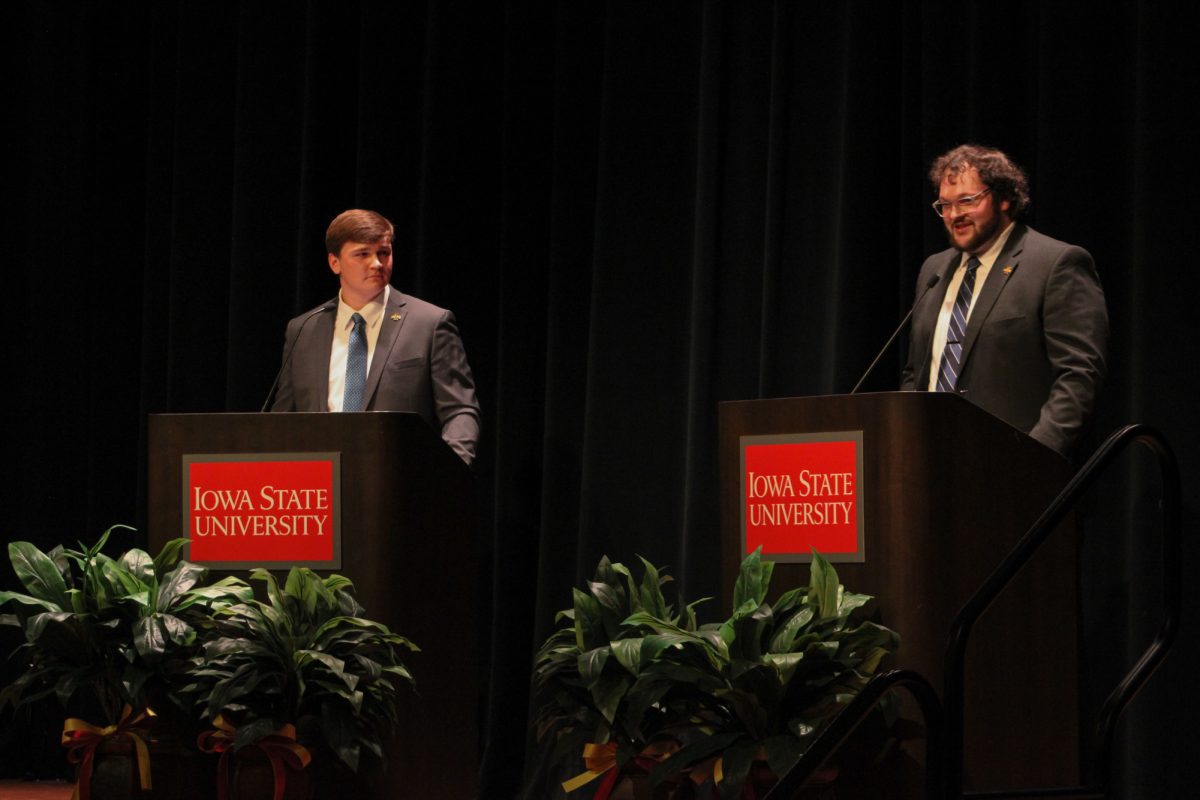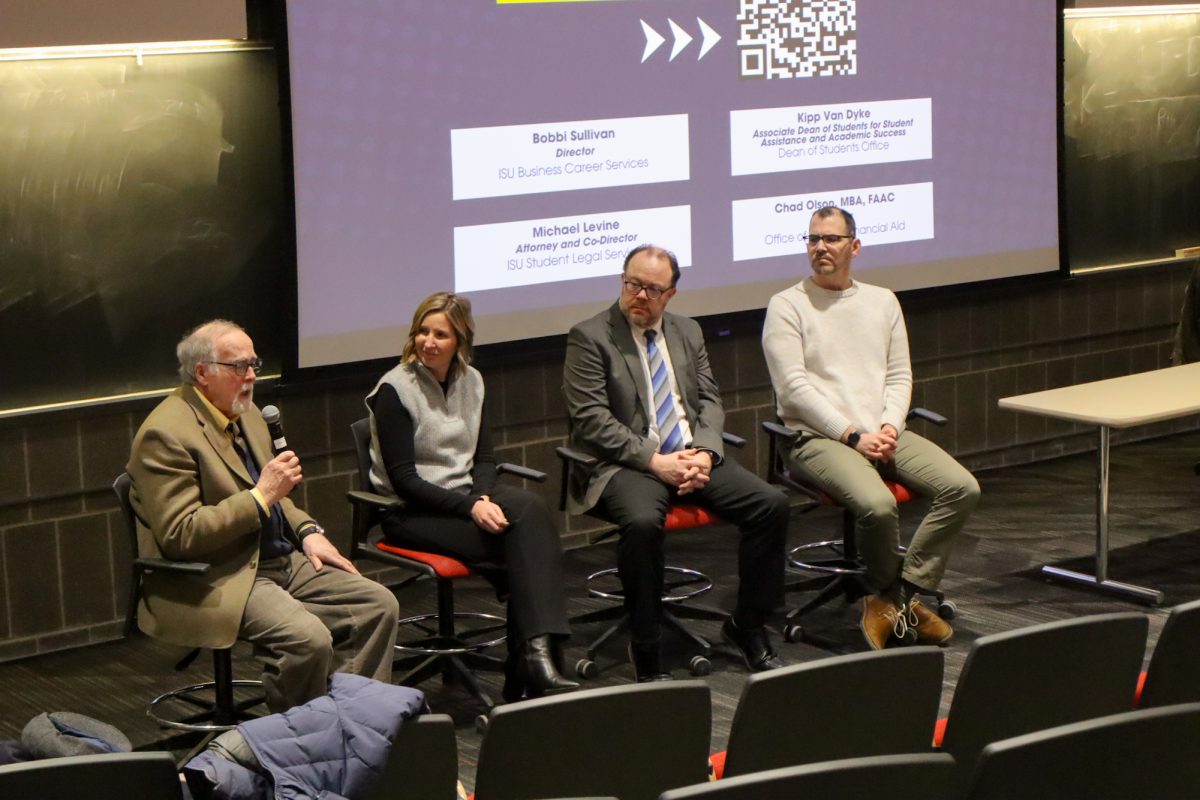ISU researchers work to make C60 buckyballs
April 12, 2001
ISU researchers are getting a kick out of the synthesis of soccer ball-shaped carbon-60 molecules called buckyballs.
Peter Rabideau, senior chemist at the Ames Laboratory, said he and his fellow researchers consider themselves “molecular architects” and consider buckyballs “really neat structures” because of their unique shape. The structure, he said, is made of hexagon and pentagon rings and is hollow. It is the same shape used to build geodesic domes such as the Epcot Center at Disney World, said Rabideau, dean of liberal arts and sciences.
On a chemical level, he said, C60 buckyballs are “bigger than water, but very, very small.”
The problem, Rabideau said, was producing enough material to make bigger buckyballs. Recently, he and fellow researcher Andrzej Sygula, assistant scientist in chemistry, developed a method to synthesize a compound that could be used to make buckyballs.
“This is the first time when people are able to make really significant amounts,” Sygula said. He said the larger quantities of available buckyball material gives scientists the opportunity to explore different properties and “try things you wouldn’t dare to try” if only small amounts existed.
In the past, Rabideau said, scientists used only a few milligrams of C20H10, the compound used to make buckybowls, which in turn make up complete buckyballs. He said they can now use chemicals and heat to make grams or pounds, and can “use that and build bigger bowls.”
Buckybowls are similar to soccer balls cut in half, except they have hydrogen bonds around the edges.
“You can’t have dangling bonds,” Rabideau said. The goal, he said, is to be able to build a complete buckyball by combining several buckybowls.
Calling them “fullerenes,” after the architect Buckminster Fuller, who pioneered geodesic domes, Sygula said buckyballs are a new form of carbon. Other forms of carbon, Rabideau said, include graphite and diamonds.
The C60 form of carbon was discovered in 1985 by scientists at Rice University, Rabideau said. The scientists were interested in the nature of carbon in interstellar space, he said, and they had the appropriate equipment to perform tests. One of the carbon forms they developed was a C60 sphere – a buckyball.
The future of buckyballs is uncertain, though.
“We have yet to look at applications [of buckyball research],” Rabideau said, but he hopes to eventually coordinate buckyballs with metals to possibly form catalysts, as well as trap atoms inside a buckyball to form a superconductor.
Sygula said he wants to “show we are as good as Mother Nature,” by synthesizing the molecules in a way that’s cheap and not very complicated. He said he hopes this research, funded by the Department of Energy, will contribute to general knowledge of chemistry and advance the field of nanotechnology






